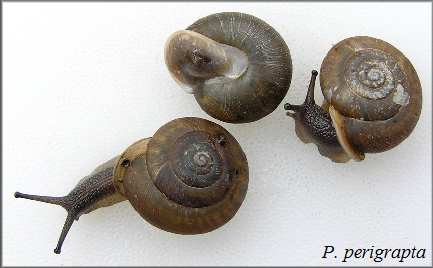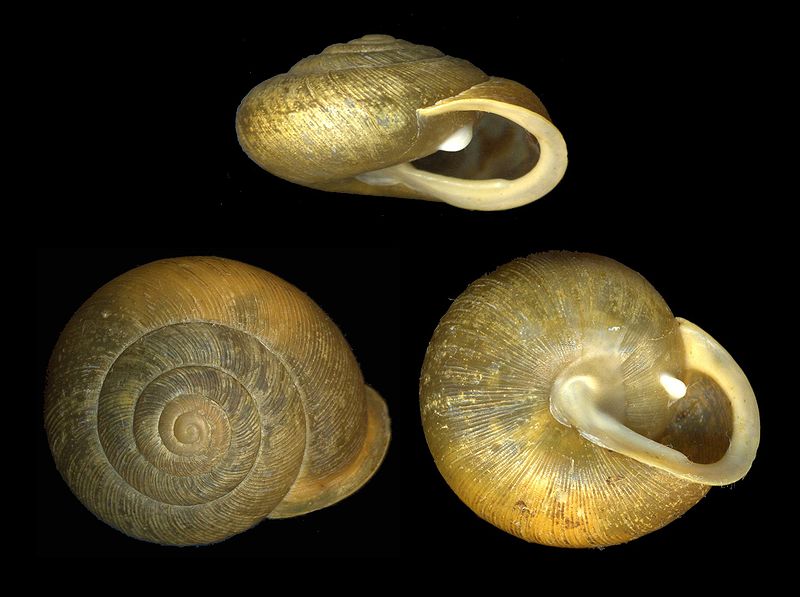Common name: Engraved Blade Tooth
Domain: Eukaryota
Kingdom: Animalia
Phylum: Mollusca
Class: Gastropoda
Order: Stylommatophora
Suborder: Sigmurethra
Family: Polygridae
Genus: Patera
Species: Patera perigrapta (Pilsbry, 1894)
Domain Eukaryota: Organisms whose cells include a membrane-bound nucleus or nuclei and other organelles (Hickman, 2012).
Kingdom Animalia: Organisms that make up this kingdom are multicellular heterotrophs (Hickman, 2012). The term heterotroph refers organisms that get their food by means of consuming another organism (Hickman, 2012).
Phylum Mollusca: This phylum is the largest group of invertebrates, behind Arthropodia (Hickman, 2012). It includes: chitins, snails, octopi, clams, and oysters (Gillis, 2012). Mollusks can range from being simple organisms to very complex organisms, but always a body plan containing a head, visceral mass, and a ventral muscular foot (Gillis, 2012). They also have a cavity within the mesoderm called a coelom (Hickman, 2012).
Class Gastropoda: They are commonly called, “Belly foots”. This class can be distinguished from other classes of Mollusks because they go through torsion, which is a 180 degree twisting of the visceral mass that occurs during development (Gillis, 2012). To view torsion, go to the facts page.
Order Stylommatophora: This order is characterized by having two pairs of tentacles, with eyes located on the tip of the upper pair (Burch, 1962).
Family Polygridae: This family is characterized by having medium to large helicid shells which can be striated or non-striated (Burch, 1962). These shells often have reflected lips, which commonly contain a tooth at the opening of the shell (Burch, 1962).
The photo above shows a shell of Patera perigrapta. Note the shape of the shell, which is described as a helicid shape. This shell shows the striated texture of the shell as well as a large tooth near the opening of the shell.
Genus Patera: The shells in the Patera family all have reflected lips, as well as a large parietal tooth (Dourson, 2010). All members of this genus are imperforate (Dourson, 2010).
Species Patera perigrapta: This species has a depressed heliciform shell (Dourson, 2010) with 5.5-6 whorls (Burch, 1962). The shell shows spirally arranged striae (Dourson, 2010). Its scientific name comes from the root words patera, which means plate, and peri, which means around (Wikipedia 2012). The basal tooth is blade-like, which gives rise to the common name engraved blade tooth (Burch, 1962).
For more information on the shell go to the Adaptations page or the Facts Page.


